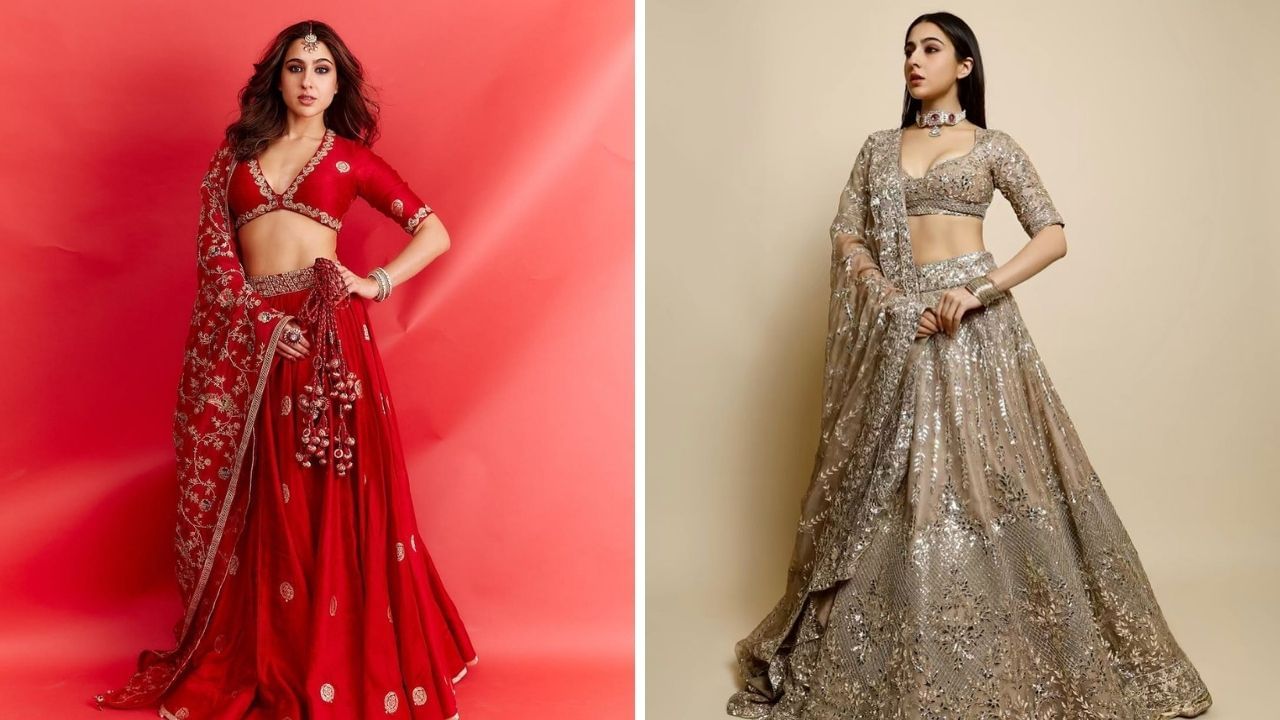Difference between lehenga and ghagra
Both lehenga and ghagra work to give a perfect look in wedding functions. Now the wedding season has started and with this the demand for attires like lehenga, ghagra, heavy suits increases a lot in the market. There is mostly confusion regarding the identity of lehenga and ghagra. Due to this reason, people get confused while shopping. Even though both these outfits look similar, there is a lot of difference between them. If you have a ceremony at your place and you are planning to buy Lehenga-Ghaghra, then know what is the difference between these two Indian attires.
Both lehenga and ghagra are such attire which are worn for different functions, due to which you get a perfect look. There is a lot of difference in the pattern, silhouette and blouse of these two, so you can easily differentiate between them. Let us know what are the 5 differences between them.
First know the difference in history
Ghaghra is historically a royal attire. It is mainly considered to be the traditional attire of Rajasthan, Gujarat and North India, while the lehenga is considered to be inspired by the fashion culture of the Mughal royal family. With time, the design of lehenga changed and it became a heavy attire and became the most important part of the bride’s attire.
There is a difference in flared design
Ghagra is usually heavily flared i.e. more flared. In which a cloth of the same length and width is taken, single stitched on the side, folded into a belt and the entire circle is prepared, along with this, light work is done on the bottom. A straight ghagra is often stitched with a simple belt, leaving room for the nada to be inserted. Because of this, its fitting remains loose, whereas in the stitching of the lehenga, the fitted measurement of the waist is taken and fitting is given in a uniform manner till the middle of the bottom. Due to this, its look is mostly A-line.
The difference is visible in the design
Mostly gota patti work is done in Ghaghra. Its dupatta is also prepared in the same way. Apart from this, light print or lace is applied on the ghagra. Because of this it is more comfortable to wear. The design of the lehenga, on the other hand, is more structured, with cali-work, cancan layers, heavy borders and heavy embroidery work. It is a bit heavy to wear.
There may be a difference in length
The length of the lehenga is usually floor length, but the ghagra sometimes remains up to the ankle line, while at times it can also be mid-length slightly below the knees. The most important thing is that several meters of cloth is used to make the circumference of a ghagra, whereas a simple lehenga requires only 3 to 3.5 meters of cloth. Although if it is a budded lehenga then more cloth may be used, yet the width of the skirt remains only two to two and a half meters.
There is a difference in the blouse
The blouses carried with the lehenga are of many designs, in which decorative pieces like the one at the back are also used, while heavy work is done on the sleeves, neckline and back. Apart from this, if we talk about design, mainly princess cut blouses are worn with lehenga. Long shirts are traditionally paired with ghagras. Apart from this, boho touch can be seen in the traditionally made cholicut blouse with ghagra, like cowrie work, mirror detailing.
